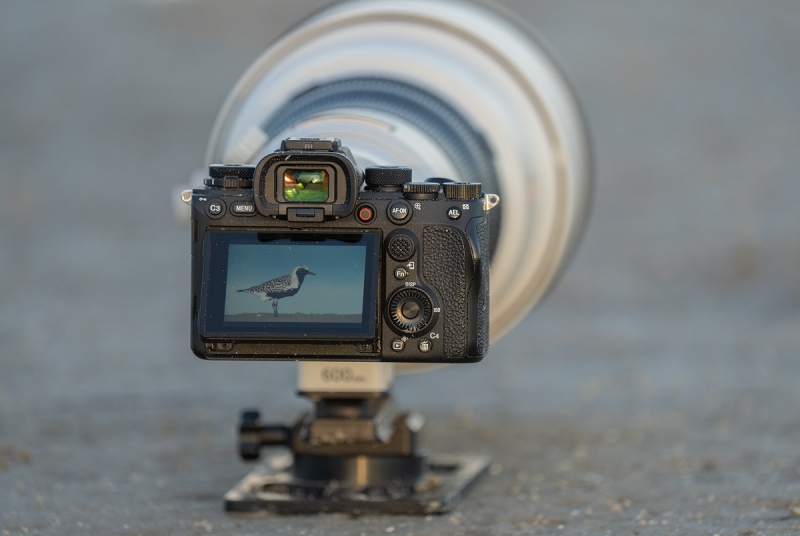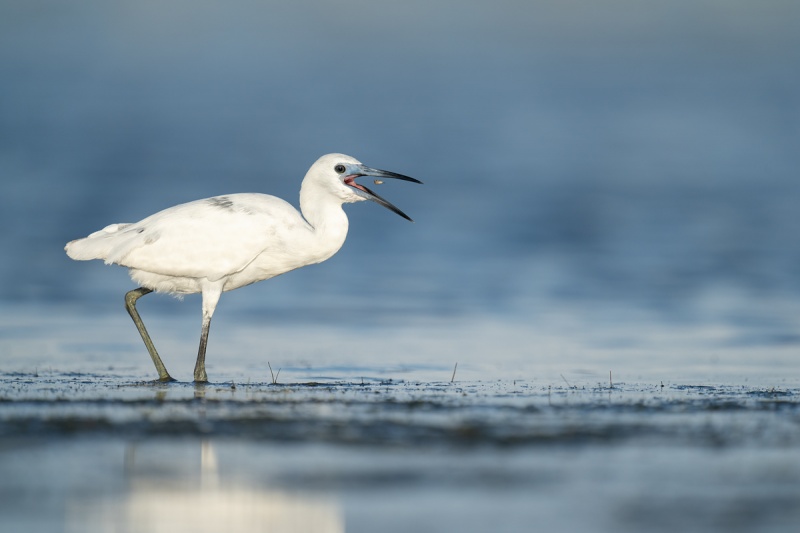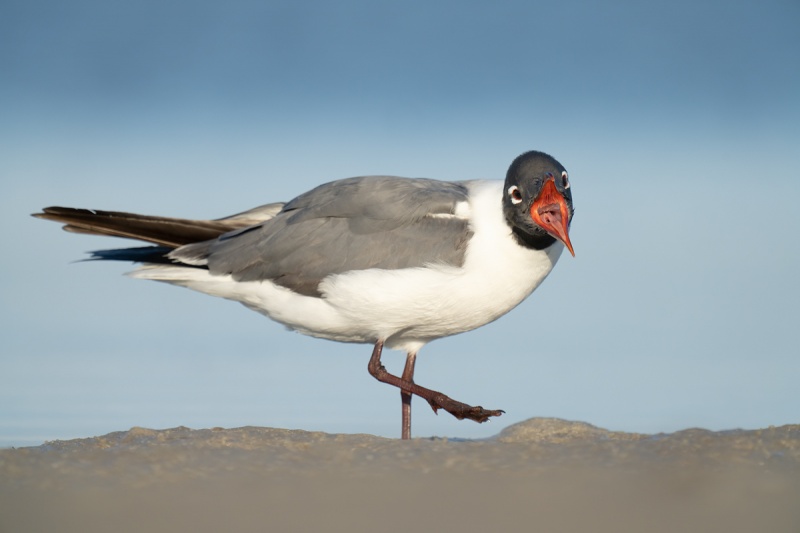Your Fave?
Which of today’s featured images is your favorite? Please leave a comment and let us know why you made your choice.
What’s Up?
Conditions were perfect on Tuesday morning, but again, there were few birds around but for two of the three crane families. So I made a long series of images of a (picked and Plamped) false foxglove flower. I was home early, finished Wednesday’s blog post, had a nice brunch, and spent lots of time working on the Nikonians webinar presentation. I did my swim and my bursts in the afternoon.
Today is Thursday 10 June 2021. The weather for the morning is once again looking perfect so it is likely that I will be looking for some wildflowers in bloom. Wherever you are, and whatever you are doing, I hope that you have a great day.
This blog post took more than an hour to prepare, and makes 166 consecutive days with a new one. Please remember that if an item — a Delkin flash card, or a tripod head — for example, that is available from B&H and/or Bedfords and is also available in the BAA Online Store, it would be great if you opt to purchase from us. We will match any price. Please remember also to use my B&H affiliate links or to save 3% at Bedfords by using the BIRDSASART discount code at checkout. Doing either often earns you free guides and/or discounts. And doing so always earns my great appreciation.
FlexShooter Pro News
Along with the FlexShooter Pro and the FlexShooter Mini, the Levered-Clamp FlexShooter Pro is finally back in stock. Here. Tomorrow the brand new Levered-Clamp FlexShooter Mini will, by popular demand, be in the BAA Online Store. We only have six Levered-Clamp FlexShooter Minis in stock. To be sure of getting one, it would be best to order yours right now by calling Jim in the office at 863-692-0906. They will sell for $669.00. The Levered-Clamp Mini will be perfect for all mid-range telephotos and telephoto zoom lenses, and the levered-clamp is a huge improvement over the original versions with a knob.
Please Remember
With income from IPTs now close to zero, please, if you enjoy and learn from the blog, remember to use one of my two affiliate programs when purchasing new gear. Doing so just might make it possible for me to avoid having to try to get a job as a Walmart greeter and will not cost you a single penny more. And if you use Bedfords and remember to enter the BIRDSASART code at checkout, you will save 3% on every order and enjoy free second-day air shipping. In these crazy times — I am out at least forty to sixty thousand dollars so far due to COVID 19 (with lots more to come) — remembering to use my B&H link or to shop at Bedfords will help me out a ton and be greatly appreciated. Overseas folks who cannot order from the US because of import fees, duties, and taxes, are invited to help out by clicking here to leave a blog thank you gift if they see fit.
New and Better Bedfords Discount Policy!
You can now save 3% on all of your Bedfords photo gear purchases by entering the BIRDSASART coupon code at checkout. Your discount will be applied to your pre-tax total. In addition, by using the code you will get 2nd day air shipping via Fed Ex.
Grab a Nikon AF-S Teleconverter TC-14E III and save $14.99. Purchase a Canon EOS R5 and your discount will be $116.97. Purchase a Sony FE 600mm f/4 GM OSS lens and save a remarkable $389.94! Your Bedford’s purchase no longer needs to be greater than $1,000.00 for you to receive a discount. The more you spend, the more you save.
Money Saving Reminder
Many have learned that if you need a hot photo item that is out of stock at B&H and would enjoy free second-day air shipping, your best bet is to click here, place an order with Bedfords, and enter the coupon code BIRDSASART at checkout. If an item is out of stock, contact Steve Elkins via e-mail or on his cell phone at (479) 381-2592 (Central time). Be sure to mention the BIRDSASART coupon code and use it for your online order to save 3% and enjoy free 2nd-day air shipping. Steve has been great at getting folks the hot items that are out of stock at B&H and everywhere else. The wait lists at the big stores can be a year or longer for the hard to get items. Steve will surely get you your gear long before that. For the past year, he has been helping BAA Blog folks get their hands on items like the SONY a9 ii, the SONY 200-600 G OSS lens, the Canon EOS R5, the Canon RF 100-500mm lens, and the Nikon 500mm PF. Steve is personable, helpful, and eager to please.


Gear Questions and Advice
Too many folks attending BAA IPTs (remember those?) and dozens of photographers whom I see in the field and on BPN, are–out of ignorance–using the wrong gear especially when it comes to tripods and more especially, tripod heads… Please know that I am always glad to answer your gear questions via e-mail.
|
|
|
This image was created while seated at my favorite afternoon spot at Fort DeSoto. I used the versatile, hand held 200-600 (at 535mm) and the a1. Image #1: 600 GM & 2X TC with the SONY a1 on the Panning Ground-Pod |
Getting Sand and Mud on Your Expensive Camera Body
Yes, when working at ground level I routinely get sand and mud on my camera bodies, expensive and otherwise. When I am at the beach, I always have a soft paint brush in my fanny pack for quick but effective clean-ups. Getting your camera dirty is included in the price of admission for those wishing to create intimate, ultra-low perspective images of birds on the ground (or in the water). You can always keep your gear clean by standing up and shooting down at your subjects …
How Low Can You Go?
On a flat beach, nothing beats the Panning Ground-Pod for getting low. The ground pod is not more than 1 1/2 inches tall and as its name implies, you can pan (smoothly and easily) with a moving subject.
Now you have two options:
- 1: Lying flat on the ground or the mud or the sand, allows you the greatest control as you have your eye to the viewfinder. For some — like me, this involves back and neck muscle strain. And you will get dirty for sure.
- 2- Sitting, and working on the tilted rear screen does not involve much strain or pain and the only thing getting dirty will be your butt unless you are sitting on some sort of pad or a plastic sheet. If you are sitting on something, it will be much more difficult to change your position either to follow the birds or to get on sun angle. I do not recommend sitting on a milk crate when using the Panning Ground-Pod (as opposed to when working off a fully-splayed, flattened tripod. Why? It will be a long way down to the camera body and it will thus be difficult to see the rear screen.)
Sitting and working off the tilted rear screen has opened up whole new worlds for me. Wearing my reading glasses makes it a lot easier to see the rear monitor well. That said, you need to be able to trust your AF system. Panning with a moving subject and properly framing the image takes practice. Lots of practice. But the rewards are well worth it.
Note: as detailed in our SONY e-Guide and in the a1 Info and Updates e-mails, the high-end SONY body’s allow you to toggle the electronic level off and on. I do that quite often when working super-low to try and ensure that my images are square-to-the-world.
|
|
|
This image was created on 10 May 2021 at the my favorite afternoon spot at Fort DeSoto. While seated, I used the Panning Ground-Pod mounted-Sony FE 600mm f/4 GM OSS lens, the Sony FE 2.0x Teleconverter, and The One, the Sony Alpha 1 Mirrorless Digital Camera (Body Only). ISO 640. The exposure was determined by Zebras with ISO on the rear wheel: 1/1600 sec. at f/8 (wide open) in Manual mode. RawDigger showed this exposure to be perfect. AWB at 7:03pm on a sunny afternoon. Wide/AF-C was active at the moment of exposure and performed perfectly. Click on the image to enjoy a larger version. Image #1: Little Blue Heron with tiny baitfish |
Working a Subject
While following this bird as it fed, I must have gotten up and down at least half a dozen times in an effort to stay relatively square to the subject and to stay on sun angle. My strategy involves sitting down a few yards in front of sun angle and then letting the bird come to me. Once the bird is past sun angle it is up and down again. There is sometimes a lot of work to be done when working a subject.
It requires lots of practice panning to keep the bird back in the frame. In addition, I am constantly toggling the level on and off to ensure that I am square to the word. Sometimes I rotate the lens in the tripod collar to get level, and sometimes I re-seat the ground pod in the muck to get level. Heck, I did not even mention that finding the bird in the viewfinder can be quite difficult, especially when working at 1200mm, and especially considering that one of the disadvantages of working off the ground pod is that there is no up and down panning; you control the elevation of the lens when you set the ground pod on the beach.
That said, I made more than 200 images of this bird in just over six minutes. I kept 14 after the first edit.
|
|
|
This image was also created on 10 May 2021 at the my favorite afternoon spot at Fort DeSoto. While seated, I used the Panning Ground-Pod mounted-Sony FE 600mm f/4 GM OSS lens, the Sony FE 2.0x Teleconverter, and The One, the Sony Alpha 1 Mirrorless Digital Camera (Body Only). ISO 800. The exposure was determined by Zebras with ISO on the rear wheel: 1/1000 sec. at f/8 (wide open) in Manual mode. RawDigger showed this exposure to be dead-solid perfect. AWB at 7:12pm on a sunny afternoon. Wide/AF-C was active at the moment of exposure and performed perfectly. Click on the image to enjoy a larger version. Image #2: Laughing Gull beginning yawn |
Less Work!
As this bird stood in the same spot for five minutes after bathing, I made more than 300 images as it scratched, preened, flapped, and eventually yawned (if indeed birds actually do yawn). I kept 25. The yawning began after a short scratching sequence and comprised of 12 frames. There were three fabulous yawning frames; I had a very tough time picking the best one. I went with this one in part because of the still raised foot and in part because we can see both eyes before it turned away. For me, there are no negatives with the 30 fps frame rate of the Alpha a1. Sure, I have lots of work to do when picking my keepers, but with the viewing speed of Photo Mechanic and almost 39 years of looking at photos, I am able to fly through the images at break-neck speed. And each instant created during action and behavioral sequences is potentially priceless. With bird photography, more is always more.
Typos
With all blog posts, feel free to e-mail or to leave a comment regarding any typos or errors.


















Artie – Please put the panning ground pod on a frisbee. Yes the frisbee gets a little distorted but it keeps the camera cleaner AND it makes the pod easier to slide over the sand.
Gloria, thanks. I know that many folks like to do that but it does not work for me at all. Why? It makes is difficult or impossible to dig the ground pod into the substrate as described in my response to Muhammad below. If ti works for you, great!
with love, artie
ps: I don’t like my support sliding in the sand. The resulting noise can scare away birds. That is one of the reasons that I prefer the Panning Ground-pod to the Skimmer II when I want to get really low.
Dear Art:
I’m afraid I’ll have to leave getting down and dirty to you younger folks. I really like the immature little blue heron with bait fish, although I would have cropped out some of the out of focus area in the foreground.
That might be a good option 🙂
with love, a
Love both, but I’m going with the gull. If for non other reason, the super clean background speaks to me.
Hi, Artie. With the panning ground-pod, do you ever find that the camera needs to be tilted up or down, albeit slightly, to frame the bird just right? What do you do in that situation?
Hi Muhammad, How is my R5 doing ???
Good question.
Unless you are working on a totally flat surface, like a parking lot (ouch!), the lens almost always needs to be titled slightly up or down; we can call that the pitch, or the angle of inclination or declination. This is done by pushing the ground pod into the sand or mud or dirt as needed as you are attempting to find the bird in the viewfinder! In short order, it becomes natural as pointing the lens on a gimbal head at the subject.
much love, artie
I would say #1 is my favorite but the camera needs quite a bit of cleanup. I always like shots of birds flipping their fish, as in #2, but the fish is so small it’s more of a snack than a meal. I’d also like the bird to be a bit more centered in the frame. #3 scares me, with that wide-open beak. The smudgy-looking blur along the bottom detracts from my enjoyment of the image. Overall, I’m going to have to go with #2.
Thanks for leaving a comment, Steve. I have never seen a little blue catch anything but small fish and small shrimp.
with love, a